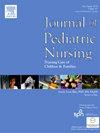提高儿童心肺复苏知识、态度和实践的教育策略和技术:系统综述
IF 2.1
4区 医学
Q2 NURSING
Journal of Pediatric Nursing-Nursing Care of Children & Families
Pub Date : 2025-05-03
DOI:10.1016/j.pedn.2025.04.032
引用次数: 0
摘要
问题心肺复苏术的早期培训,特别是针对儿童的心肺复苏术培训至关重要,因为它有可能提高社区对紧急情况的反应能力。本综述旨在研究用于促进儿童心肺复苏术知识、态度和实践(KAP)的教育策略和技术的影响。资格标准涉及12岁以下儿童的初级研究;没有语言和出版时间的限制。参考数据库:SCOPUS, MEDLINE/PubMed, WoS, LILACS, EMBASE, COCHRANE和谷歌Scholar。在对题目和摘要进行筛选之后,我们选择了35篇文章进行全文分析。一项批判性综述排除了18篇文章,结果纳入了17项研究。结果教育策略和技术对儿童心肺复苏术的KAP的影响主要是积极的,除了一项研究表明对态度只有适度的影响。一些研究表明,随着时间的推移,有效性会下降;然而,干预后的结果仍然优于基线水平。结论适合不同年龄组的教育策略和技术对儿童心肺复苏术的KAP有积极影响。儿童时期的培训可提高反应能力,并有助于在面对涉及心脏骤停的医疗紧急情况时建立一个更有准备和更负责任的社会。本综述的发现可以指导选择有效的策略和技术来改善儿童的KAP,从而增加学校和其他环境中心肺复苏教育的依从性。本文章由计算机程序翻译,如有差异,请以英文原文为准。
Educational strategies and technologies for promoting knowledge, attitude, and practice of children on cardiopulmonary resuscitation: A systematic review
Problem
Early training in cardiopulmonary resuscitation (CPR), particularly when directed at children, is crucial due to its potential to improve community responsiveness in emergency situations. This review aims to examine the impact of educational strategies and technologies used to promote children's knowledge, attitude, and practice (KAP) regarding CPR.
Eligibility criteria
Primary studies involving children up to 12 years of age; no restrictions on language or publication period. Databases consulted: SCOPUS, MEDLINE/PubMed, WoS, LILACS, EMBASE, COCHRANE, and Google Scholar.
Sample
Following the screening of titles and abstracts, 35 articles were selected for full-text analysis. A critical review led to the exclusion of 18 articles, resulting in the inclusion of 17 studies.
Results
The effects of educational strategies and technologies on children's KAP regarding CPR were predominantly positive, with the exception of one study that demonstrated only a moderate impact on attitude. Some studies indicated a decline in effectiveness over time; however, post-intervention results remained superior to baseline levels.
Conclusions
Educational strategies and technologies adapted to different age groups have a positive impact on children's KAP regarding CPR. Training during childhood enhances response capabilities and contributes to a more prepared and responsible society when facing medical emergencies involving cardiac arrest.
Implications
The findings of this review can guide the selection of effective strategies and technologies that improve children's KAP, thereby increasing adherence to CPR education in schools and other settings.
求助全文
通过发布文献求助,成功后即可免费获取论文全文。
去求助
来源期刊

Journal of Pediatric Nursing-Nursing Care of Children & Families
NURSING-PEDIATRICS
CiteScore
3.70
自引率
8.30%
发文量
291
审稿时长
65 days
期刊介绍:
Official Journal of the Society of Pediatric Nurses and the Pediatric Endocrinology Nursing Society (PENS)
The Journal of Pediatric Nursing: Nursing Care of Children and Families (JPN) is interested in publishing evidence-based practice, quality improvement, theory, and research papers on a variety of topics from US and international authors. JPN is the official journal of the Society of Pediatric Nurses and the Pediatric Endocrinology Nursing Society. Cecily L. Betz, PhD, RN, FAAN is the Founder and Editor in Chief.
Journal content covers the life span from birth to adolescence. Submissions should be pertinent to the nursing care needs of healthy and ill infants, children, and adolescents, addressing their biopsychosocial needs. JPN also features the following regular columns for which authors may submit brief papers: Hot Topics and Technology.
 求助内容:
求助内容: 应助结果提醒方式:
应助结果提醒方式:


